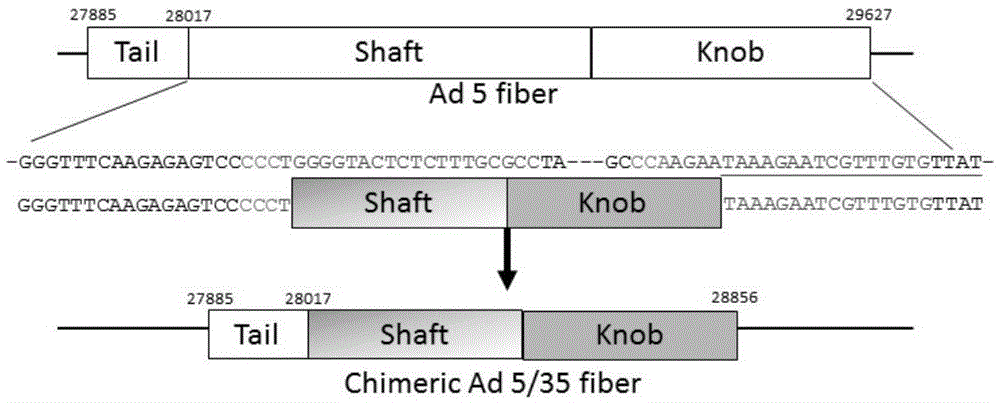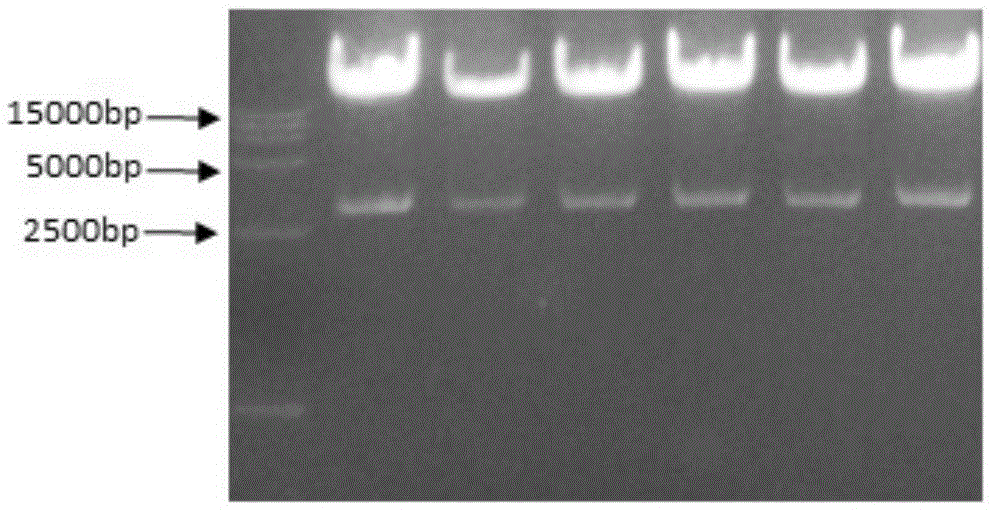CRICPR-Cas9-based method for in-vitro modifying adenovirus vectors
A carrier and gene technology, applied in the field of in vitro modification of type 5 adenovirus ciliary gene based on CRICPR-Cas9, can solve problems such as secondary mutation and restriction enzyme site modification
- Summary
- Abstract
- Description
- Claims
- Application Information
AI Technical Summary
Problems solved by technology
Method used
Image
Examples
Embodiment 1
[0066] Example 1, construction of Ad5F35 chimeric adenovirus vector
[0067] This example takes the construction of the Ad5F35 chimeric adenovirus vector as an example to specifically illustrate that in order to solve the problem that it is difficult to find suitable restriction enzyme sites for transformation of large plasmid vectors using conventional molecular biology methods, the present invention A specific transformation method for large plasmid vectors is provided. This embodiment provides corresponding technical solutions, based on CRICPR-Cas9 technology (Cas9 in vitro realizes site-specific cleavage break site schematic diagram as shown in figure 1 shown) to replace the coding genes of the ciliated head section and rod region of type 5 adenovirus with those of type 35 adenovirus type 35, so as to obtain the Ad5F35 chimeric adenovirus vector. Schematic diagram of the Ad5 cilia gene replacement strategy on the pAD / PL-DEST vector. figure 2 shown.
[0068] 1. Design a...
PUM
 Login to View More
Login to View More Abstract
Description
Claims
Application Information
 Login to View More
Login to View More - R&D
- Intellectual Property
- Life Sciences
- Materials
- Tech Scout
- Unparalleled Data Quality
- Higher Quality Content
- 60% Fewer Hallucinations
Browse by: Latest US Patents, China's latest patents, Technical Efficacy Thesaurus, Application Domain, Technology Topic, Popular Technical Reports.
© 2025 PatSnap. All rights reserved.Legal|Privacy policy|Modern Slavery Act Transparency Statement|Sitemap|About US| Contact US: help@patsnap.com



